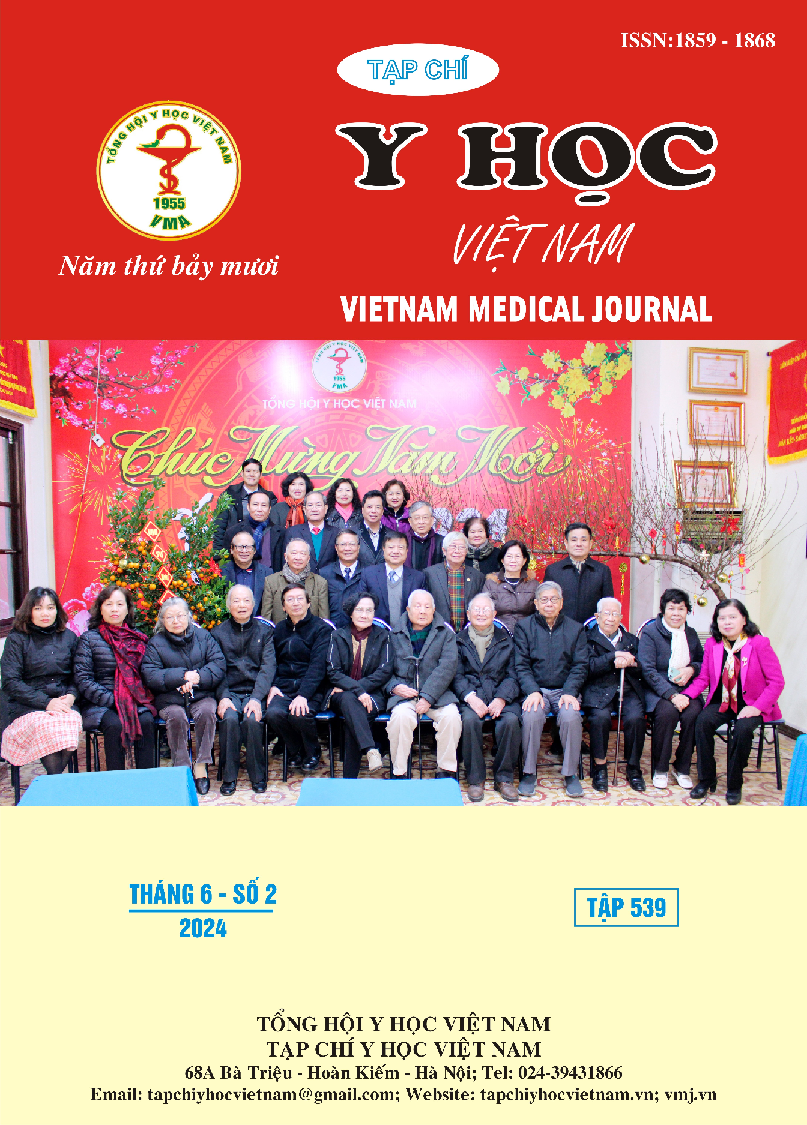RESULT OF TREATEMENT OF CLOSED CALCANEAL FRACTURE BY OSTEOSYNTHESIS WITH LOCKING PLATE
Main Article Content
Abstract
Objective: To evaluate result of osteosynthesis by locking calcaneal plate for closed calcaneus fracture. Method: A prospective study of 32 patients with closed calcanealfractures, who had treated by locking calcaneal plate fixation from October 2020 to October 2022. Result: we operated 32 cases close calcaneal fractures from 10/2020 to 10/2022. The frequent age of the patients ranged from 18 to 55 years (mean: years). The mean time of follow - up was 16 months. The posoperative radiography to measure Böhler’s angle was 27º ± 9,3o and Gissane ’s angle of the calcaneus was 120,2º ± 5,6o.According to the Rowe foot score was 93,8% of patients achieving fair to excellent, average 6,2% and no patients had poor outcome. Conclusion: Internal fixation with locking plate is good choice for closed fracture calcaneus with displacement of the joint surface
Article Details
References
2. Jain S, Jain AK, Kumar I., Outcome of open reduction and internal fixation of intra articular calcaneal fracture fixed with locking calcaneal plate, Chinese J of Traumatology. 2013;16(6): pp. 355÷360
3. Lâm Quốc Thanh (2015), Đánh giá kết quả điều trị gãy kín lún nhiều mảnh xương gót bằng phương pháp kết hợp xương nẹp ốc, Luận văn Chuyên khoa 2, Đại học Y khoa Phạm Ngọc Thạch.
4. Nguyễn Lâm Bình (2016), Nhận xét kết quả bước đầu phẫu thuật kết hợp xương nẹp khóa điều trị gãy xương gót, Tạp chí Chấn thương chỉnh hình 2016.
5. Ying Li (2016), Complication in operative fixation of calcaneal fracture, Int J Surg.12, pp.475÷80.
6. Mohnish Gadhavi (2018), To study outcomes of calcaneus fractures treated by conservative and surgical treatment according to AOFAS scoring system, National Journal of Clinical Orthopaedics, 87, pp.1260÷ 1264.
7. Phạm Đình Dũng, Hoàng Đức Thái (2021), Mối tương quan giữa các góc xương gót đại diện cho diện khớp sên sau ở người Việt Nam bình thường, Y học TP. Hồ Chí Minh, Tập 25, Số 1/2021.
8. Essex-Lopresti P. (1952), The mechanism, reduction technique, and results in fractures of the os calcis, Br J Surg.39, pp.395÷ 419.


